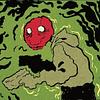You need to sign in or sign up before continuing.
Take a photo of a barcode or cover
Very good book to convince one of the barbarity and general uselessness of war.
challenging
dark
emotional
reflective
sad
medium-paced
Plot or Character Driven:
Character
Strong character development:
No
Loveable characters:
Yes
Diverse cast of characters:
No
Flaws of characters a main focus:
No
This book doesn’t really focus on a traditional plot with twists and turns. Instead, it follows Paul and his friends through the war, showing what happens to them and how they change.
Plot
The story follows Paul Bäumer, a young German soldier, along with his classmates and friends—Müller, Tjaden, Kropp, and especially Kat, his closest companion and mentor. Together they endure life on the Western Front during World War I.
Paul and his friends had been encouraged to enlist by their teacher and other authority figures. Their training is harsh, emphasizing strict obedience rather than real preparation for the front.
At the front, the men quickly become accustomed to constant death. When one of their friends dies early on, his boots are immediately passed on to Müller. Bombardments are frequent, and new recruits often break down in terror, while the veterans rely on instinct to survive. By the later stages of the war, recruits are being sent straight into the trenches with hardly any training at all, and they are killed almost immediately.
At one point, Paul is granted leave to return home. He visits his family but feels out of place. He’s bombarded with questions about the war and realizes he no longer belongs in civilian life.
Later, Paul is wounded and spends time in a hospital. Care is inconsistent, and many men face amputations, depression, or death. Those sent to the “dying room” rarely come back. Paul eventually heals and is sent back to the front.
In one major scene, Paul is trapped in a shell hole during an attack. A French soldier falls into the hole with him, and Paul stabs him. The man doesn’t die right away, forcing Paul to remain with him as he slowly passes.
Homesickness wears down the soldiers over time. Detering, one of Paul’s friends, sees cherry blossoms that remind him of home. Overcome, he deserts, but the others later hear that he was caught and assume the worst
.
.
As the war drags on, Paul’s group suffers heavy losses. Kat is badly wounded in the leg, and Paul carries him to a medical station while shells fall around them. Paul talks to him the whole way, reassuring him that he’ll soon be safe and even promising to visit him after the war. But once they arrive, Paul finds that Kat has already died, making the entire desperate journey meaningless.
Not long after, Paul himself is killed. The narration simply says that he died on a quiet day, when the official report was that “All was quiet on the Western Front.”
Themes and Emotions
One of the strongest ideas in the book is how the boys were manipulated into enlisting, thinking they were serving a noble cause. Instead, they became cannon fodder. Training was more like brainwashing, stripping them of individuality.
The bombing scenes highlight the stark difference between new recruits and veterans. The young soldiers freeze, panic, and die in gruesome ways, while Paul and his friends rely on instincts they’ve developed over years of survival. The veterans have adapted to the madness of trench life, but the new soldiers are destroyed almost instantly, showing just how desperate the army had become by the end.
Paul’s view on death shows how numbing war can be. Soldiers don’t cry or mourn the way we expect—they accept death as part of life at the front. The scene with the boots shows how practical survival becomes more important than grief.
The scene where Paul kills the French soldier is one of the most powerful. You see his humanity break through for a moment when he calls the dying man “comrade” and thinks about how they could have been friends under different circumstances. It’s the clearest example of how war destroys human connection.
The sections about leave and the hospital also show how the war changes soldiers permanently. Paul feels completely alienated when he goes home, realizing he doesn’t fit into civilian life anymore. In the hospital, we see how suffering doesn’t end when soldiers leave the trenches—amputations, depression, and the “dying room” show another side of the war’s destruction.
Kat’s death is especially heartbreaking because he has been Paul’s mentor and anchor throughout the novel. Paul’s determination to carry him to safety, talking about the future and even making plans to meet after the war, makes it all the more devastating when Kat dies before they arrive. It shows the futility of hope in a world completely consumed by war.
Finally, Paul’s own death is described with almost no emotion, which somehow makes it even more powerful. After everything he went through, he’s remembered as just another soldier who died on a “quiet day.”
Final Thoughts
All Quiet on the Western Front isn’t about winning battles—it’s about what war does to the people who fight it. The plot is straightforward, but the emotions and themes stick with you long after. The way Paul and his friends are broken down, numbed, and ultimately forgotten shows just how devastating trench warfare was.
This novel was incredibly important in its time because it showed ordinary people back home what life was really like on the front. It stripped away the patriotic speeches and propaganda and replaced them with the raw, unfiltered truth. Even today, it still stands as one of the most powerful anti-war books ever written.
adventurous
dark
emotional
reflective
sad
tense
fast-paced
Plot or Character Driven:
Character
Strong character development:
Yes
Loveable characters:
Yes
Diverse cast of characters:
No
Flaws of characters a main focus:
Yes
dark
emotional
sad
medium-paced
Plot or Character Driven:
A mix
Strong character development:
No
Loveable characters:
Yes
Diverse cast of characters:
No
Flaws of characters a main focus:
No
challenging
dark
emotional
informative
sad
tense
medium-paced
Plot or Character Driven:
Character
Strong character development:
No
Loveable characters:
Yes
Diverse cast of characters:
No
Flaws of characters a main focus:
No
challenging
dark
reflective
sad
medium-paced
Plot or Character Driven:
Character
Strong character development:
Yes
Loveable characters:
Yes
Diverse cast of characters:
No
Flaws of characters a main focus:
Complicated
adventurous
challenging
dark
emotional
reflective
sad
tense
medium-paced
Plot or Character Driven:
Character
Strong character development:
Yes
Loveable characters:
No
Diverse cast of characters:
No
Flaws of characters a main focus:
No



